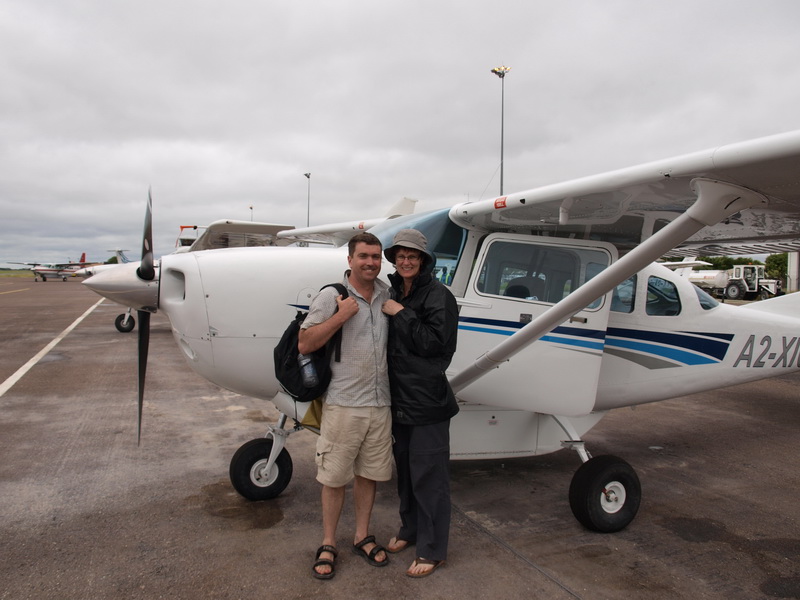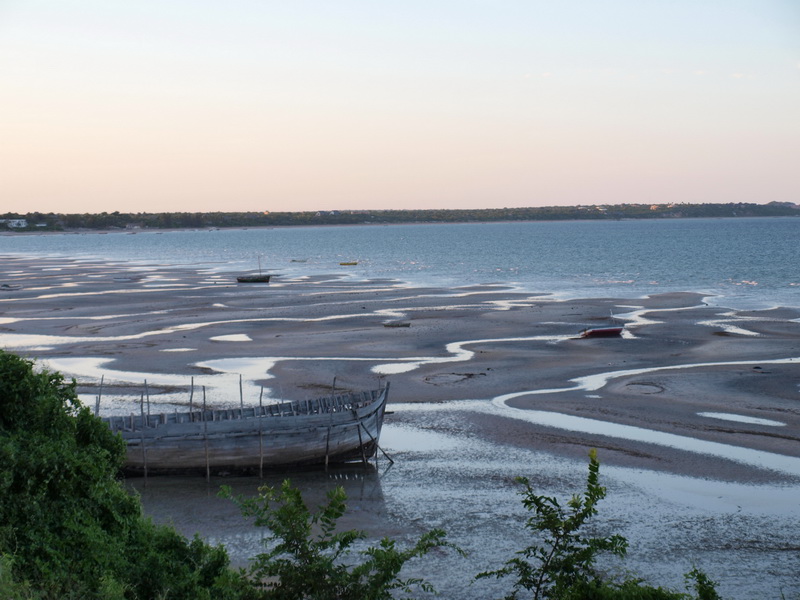General Health
On a long trip into remote areas, particularly in a country such as Africa, it is important that you are prepared as much as possible for medical situations. Prevention is better than cure, so vaccinations are vital. Equally so, it is better to not put yourself at risk and avoid dangerous situations or eating potentially unsafe food. All the information below should be confirmed with your doctor.
Vaccinations
Luckily we already have most of our injections (I hope) from previous travels. Make sure your childhood vaccinations are up to date (measles, mumps, rubella, diphtheria, polio) and get a booster shot if required. Below are the recommended vaccinations for Africa.
Typhoid
Typhoid is a life threatening illness caused by bacteria from the salmonella group. It is a common illness in the developing world which is spread by infected people and carriers who shed the bacteria in their faeces. It is contracted by eating or drinking contaminated food or if contaminated sewage gets into the water used for washing or drinking. It is more common where handwashing is not frequent and water is likely to be contaminated. Treatment is with antibiotics.
Vaccination and avoidance of risky foods and drinks will help protect you against tyohoid. A booster is required every 3 years.
Tetanus
Tetanus is a potentially fatal disease caused by bacterial infection of a wound. It causes muscular rigidity and painful contractions. It is easily contracted through even the smallest scratch.
Most of us would have had a tetanus vaccination, however a booster is required every 10 years. Ensure all wounds, even small ones, are thoroughly washed with clean water to help prevent it.
Hepatitis A
Hepatitis A is a viral disease that causes inflammation of the liver and is very common. It is transmitted by the faecal-oral route and occurs by eating or drinking contaminated food or coming into contact with unsanitary water.
The vaccination consists of 2 doses, with the second dose given between 6 and 12 months after the first. The length of immunity is still being determined, however it is believed to be at least 10 years, if not lifelong.
Hepatitis B
Hepatitis B is contracted through contact with blood or body fluids of infected people. It is common even in developed countries and affects the liver.
Vaccination consists of 3 doses, with the 2nd and 3rd at 1 month and 6 months after the first. Immunity is believed to be lifelong.
Yellow Fever
Yellow fever is a virus spread by the bite of a mosquito throughout sub-Saharan Africa. Most cases are mild, but it can be a severe and life threatening disease which has no cure. Treatment is aimed at symptomatic relief. Vaccination is a single dose and last 10 years.
Some countries (including your own) may require proof of vaccination against Yellow Fever as a part of their entry requirements. Usually it is only required if you have travelled from a country where Yellow Fever is prevalent, however if you are overlanding it is probably worthwhile to get anyway. Check with the embassies for the latest information.
Meningitis
Meningitis causes inflammation of the membrane and fluid around the brain and can be caused by either a viral or bacterial infection. It is contracted by direct contact or inhalation of bacteria droplets that are in the air. The risk to travellers is generally low, however the risk increases if you are likely to be frequenting crowded places.
Vaccination provides immunity of between 3 and 10 years depending on the vaccine used.
Rabies
Rabies is a serious viral disease transmitted via the saliva of an infected animal causing inflammation of the brain. It progresses rapidly and usually leads to death. This is not recommended for all travellers, so discuss your requirements with your doctor.
Vaccination is 3 doses over a month. Vaccination does not exclude treatment following infection, and you should still have 2 booster doses without delay.
Cholera
Cholera is a bacterial infection of the gastro-intestinal tract and is contracted by drinking or eating contaminated food.
The vaccine is 2 oral doses and provides about 80% protection. It is not normally recommended for travellers unless they are at increased risk. (On recommendation, we did take this on a trip that took us into Zimbabwe during a Cholera outbreak).
Health
There are some specific things to consider such as Malaria and Bilharzia, as well as general precautions around food and water.
Malaria
Malaria is a serious and sometimes fatal disease. The World Health Organisation estimates that each year 300-500 million cases of malaria occur worldwide and more than two million people die of malaria. It is transmitted through mosquitoes, therefore the easiest way to help prevent it is to avoid mosquito bites. Ensure you wear long sleeves and pants from dusk onwards, use repellents containing DEET (we use Bushmans), sleep under a mosquito net or make sure your tent has fine netting on the windows and no gaps where mosquitoes can get in. If sleeping in a room, burn mosquito coils. Spray your room or tent with insect repellent each night. Malaria is not the only mosquito borne disease so it makes sense to protect yourself as much as possible. It is essential you talk to your doctor about taking malaria prophylactics as the one you require is dependent on where you are travelling and possibly for how long. In some countries malaria has become resistant to chloroquine for example. We have taken Lariam without issue, although some people do react to it, from nightmares and being unable to sleep to more serious issues. The only thing I find is that the first week or so I found it a little difficult to go to sleep, but this soon disappeared. Remember that no prophylactic is 100% effective so don’t become complacent and make sure you take measures to prevent bites in the first place.
Bilharzia (Schistosomiasis)
Bilharzia is a disease caused by parasitic worms. It is contracted by coming into contact with contaminated fresh water which contains a certain snail that carries the larvae of the worms. Fresh water is contaminated when infected people urinate or defaecate in the water. The microscopic larvae are able to pass directly through the skin. Bilharzia occurs widely throughout Africa including popular places like Lake Malawi and Lake Kariba. To prevent Bilharzia, avoid swimming in fresh water. Wash in water that has been heated to more than 65oC for at least 5 minutes, or has been treated with iodine or chlorine, or has been standing for more than 48 hours. Bilharzia can be effectively treated, so it may be worthwhile being tested when you get back if you think you may have been exposed.
Food Safety and Travellers Diarrhoea
Many travellers have experienced travellers diarrhoea at some stage during their travels. Some estimates are as high as 50% of europeans spending 2-3 weeks in a developing country are affected, so it pays to take some precautions. The general rule when travelling is don’t eat or drink it if it hasn’t been peeled or freshly cooked thoroughly.
-
Don’t drink the water, including ice and cleaning your teeth.
-
Drink bottled water (ensuring the seal has not been tampered with), boil it, treat it or filter it.
-
Don’t eat foods that have been washed in contaminated water, such as salads.
-
Peel all fruit.
-
Ensure food is cooked thoroughly and eaten immediately.
-
Fish and seafood may still be an issue even if cooked thoroughly so be wary.
-
Be wary of dairy foods such as milk, cheese and ice cream.
-
Beer and soft drinks are fine (avoid the ice).
-
Wash all dishes and cutlery in clean, hot water.
-
Wash your hands thoroughly before eating or handling food and always after using the toilet. (I carry a small bottle of antiseptic hand gel just in case).
Generally I haven’t had anything major during my travels, although I am careful. That said, I am not paranoid and have eaten street food, but always make sure it is freshly cooked and things generally look clean. The one thing I always do though is use bottled water for drinking and teeth cleaning and avoid ice.
First Aid Kit
After looking at a large number of kits available and their costs, I have decided to put together my own kit. I have determined the contents based on my research and the contents of some of the more comprehensive kits. It means that I can exclude some of the unnecessary extras (like small bottles of sunblock!) and add extras where I think we need it. I also realised whilst putting this list together that the whole reason we need a reasonable kit was because we may be fairly remote at times, and if we did need to use it we would need more than one of each item as it may take us a few days to get medical help and in the meantime we would need enough supplies to change dressings etc.
First Aid International seems to be the best option. Their prices seem reasonable and they do not charge for shipping. Our kit will contain the contents listed below. If you think I’ve missed anything please let me know. We also plan to do a first aid course closer to our departure date.
| alcohol wipe | 10 | plastic bag – large 150 x 230 | 3 |
| antiseptic wipes | 10 | safety pin | 1 |
| aqua ear | 1 | saline solution 15ml | 10 |
| bandaid 50 | 1 | saline solution 500ml | 1 |
| basic dressing pack | 1 | scissors | 1 |
| betadine 100ml | 1 | shears (heavy duty) | 1 |
| betadine ointment 25g | 1 | steri strips 1.2x10cm | 2 |
| burnaid pad 10cm x 10cm | 2 | triangular bandage 110cm | 2 |
| burnsheet – small 70cm x 75cm | 1 | wound dressing no 13 | 1 |
| combine dressings 9cm x 10cm | 2 | wound dressing no 14 | 1 |
| combine dressings 10cm x 20cm | 1 | wound dressing no 15 | 1 |
| combine dressings 20cm x 20cm | 2 | zinc oxide tape 2.5cm | 1 |
| conforming elastic guaze bandage 2.5cm wide | 2 | ||
| conforming elastic guaze bandage 5cm wide | 2 | ||
| conforming elastic guaze bandage 7.5cm wide | 2 | anitbiotics | |
| crepe bandage 7.5cm wide (med weight) | 1 | antihistamine | |
| emergency shock blanket | 1 | cold tablets | |
| eye bath | 1 | cotton buds | |
| eye pad | 2 | first aid book | |
| fabric dressing length 6cmx1m | 1 | gastrolyte | |
| forceps – stainless steel | 1 | hydro corisone cream | |
| gauze swabs pack of 3 -7.5cm x 7.5cm | 5 | ibuprofen | |
| gloves – 10 | 1 | imodium | |
| heavy crepe bandage 7.5cm | 2 | insect repellent (Bushmans) | |
| heavy crepe bandage 10cm | 1 | lariam | |
| instant ice pack medium | 2 | malaria test kit | |
| micropore 25mm | 1 | malaria treatment | |
| micropore12.5mm | 1 | stingose | |
| non-adherent dressing pad 5x5cm | 3 | thermometer | |
| non-adherent dressing pad10x10cm | 3 | zorvirax |











